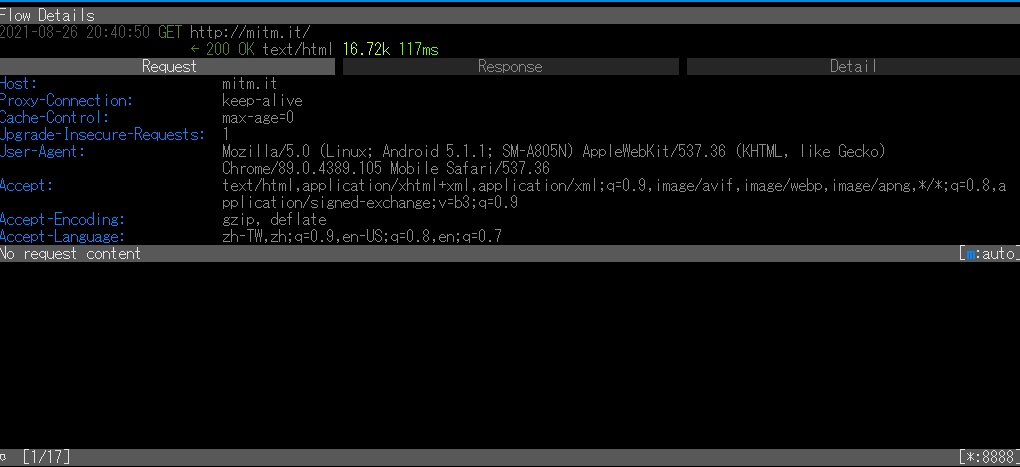
All of them have their own way of doing this, but usually they all respect the HTTPS_PROXY environment variable if set. In order to intercept the web requests, you have to tell the application(s) which proxy to use. To remove it again, just delete the file and run sudo dpkg-reconfigure ca-certificates again. Next you you will have to import it using sudo dpkg-reconfigure ca-certificates Trust the mitmproxy certificateĬheck the certificate and select Ok to import. Sudo cp ~/.mitmproxy/mitmproxy-ca-cert.pem /usr/share/ca-certificates/self-signed/mitmproxy-ca-cert.crt Then copy over the certificate (it needs to have a suffix of. Sudo mkdir /usr/share/ca-certificates/self-signed Trusting the mitmproxy certificateįirst, create a folder under /usr/share/ca-certificates/ to hold your custom certificates for easy cleanup.
MITMPROXY SSL HOW TO
Here I show how to do it on Ubuntu, but other distros might have different procedures. This means you will have to add the mitmproxy to your trusted certificate store. Now, some applications will happily allow you to just give you a warning when untrusted certificates are used, but many will deny the request and rightly so. When you run mitmproxyfor the first time, it will generate some self-signed certificates for you in ~/.mitmproxy in order to inspect HTTPS traffic.
MITMPROXY SSL INSTALL
This can be done as easily as pip3 install mitmproxy and you're off! Now mitmproxycomes in handy - fire it up in my trusty Windows Terminal and I can inspect all web requests easily! How? Read on :) Installing mitmproxy This also means that running Fiddler, for example, will not intercept the requests made by processes running on linux as it runs in a lightweight VM. This basically means VSCode launches a server on linux and runs everything from there rather than Windows. My preferred environment these days is running Visual Studio Code from WSL2 using the Visual Studio Code Remote - WSL extension. Of course, there are tons of tools to do this and I've often used Fiddler - Web Debugging Proxy for this and even Burp Suite - Application Security Testing Software (it's not just for pentesters and such!). It takes out a lot of guess work from the process and you can play around with the requests without having to tweak code.

If there is one thing I find absolutely essential when doing any kind of development or troubleshooting is to have a good tool for intercepting web requests and inspect the payloads.


 0 kommentar(er)
0 kommentar(er)
